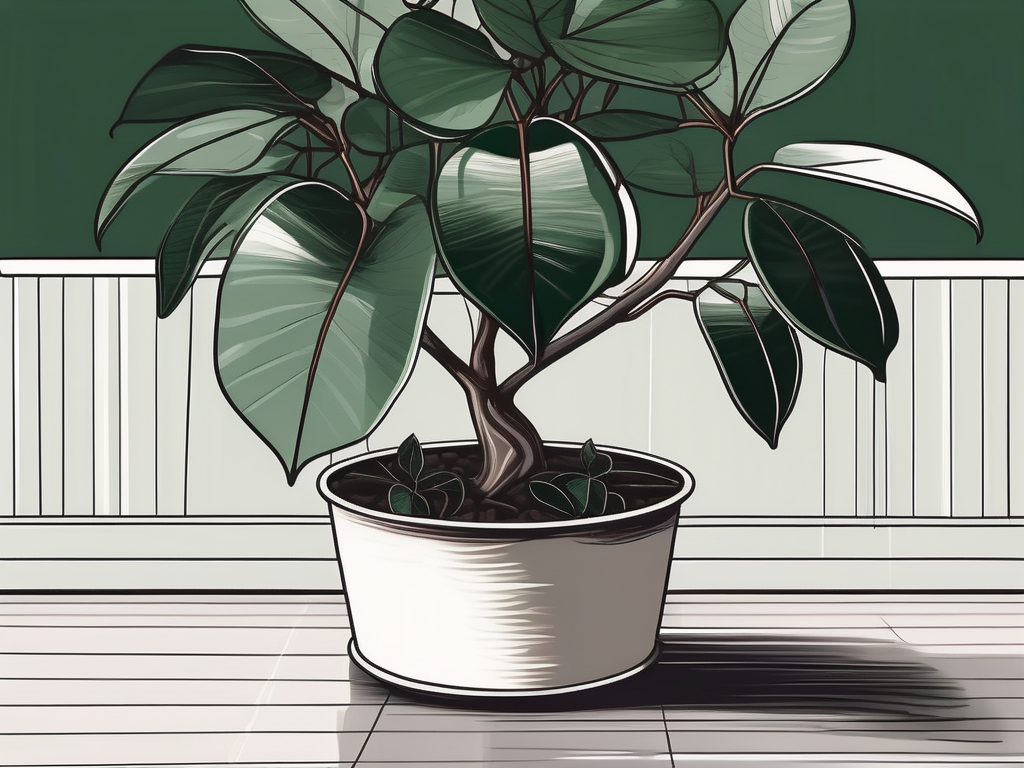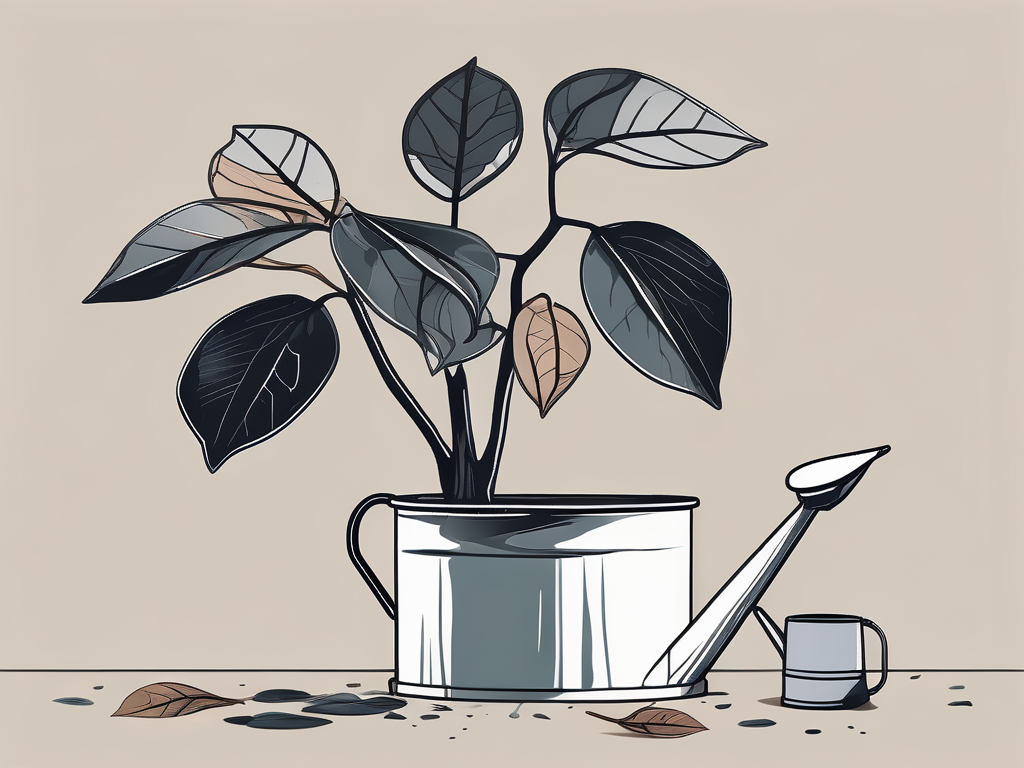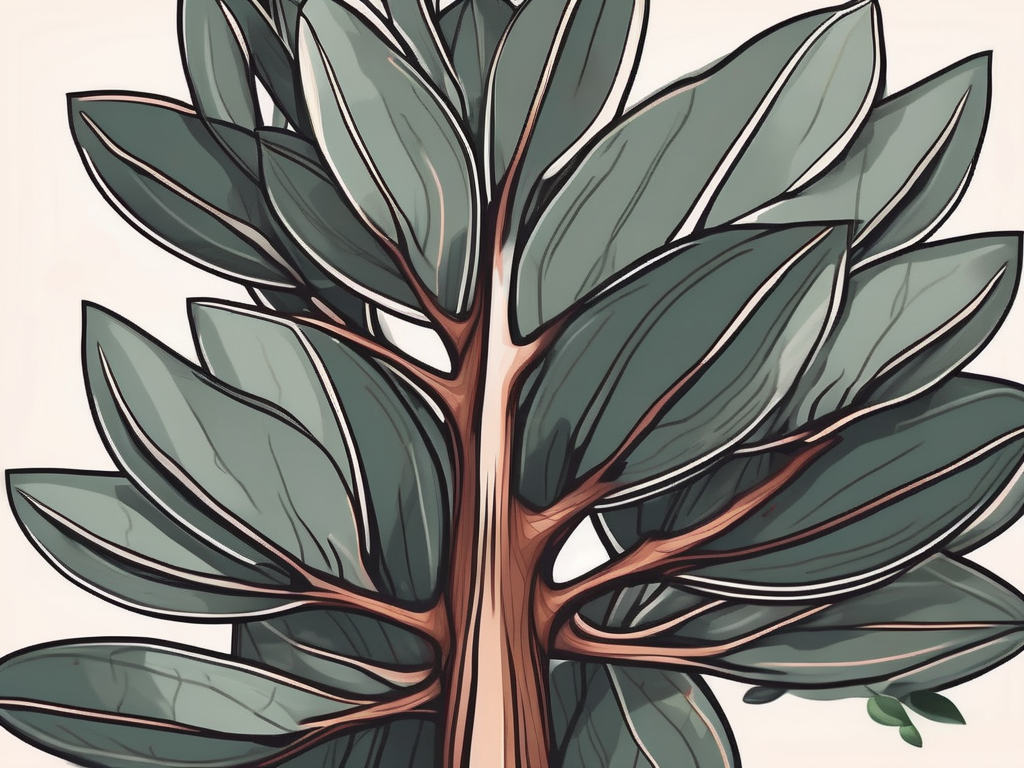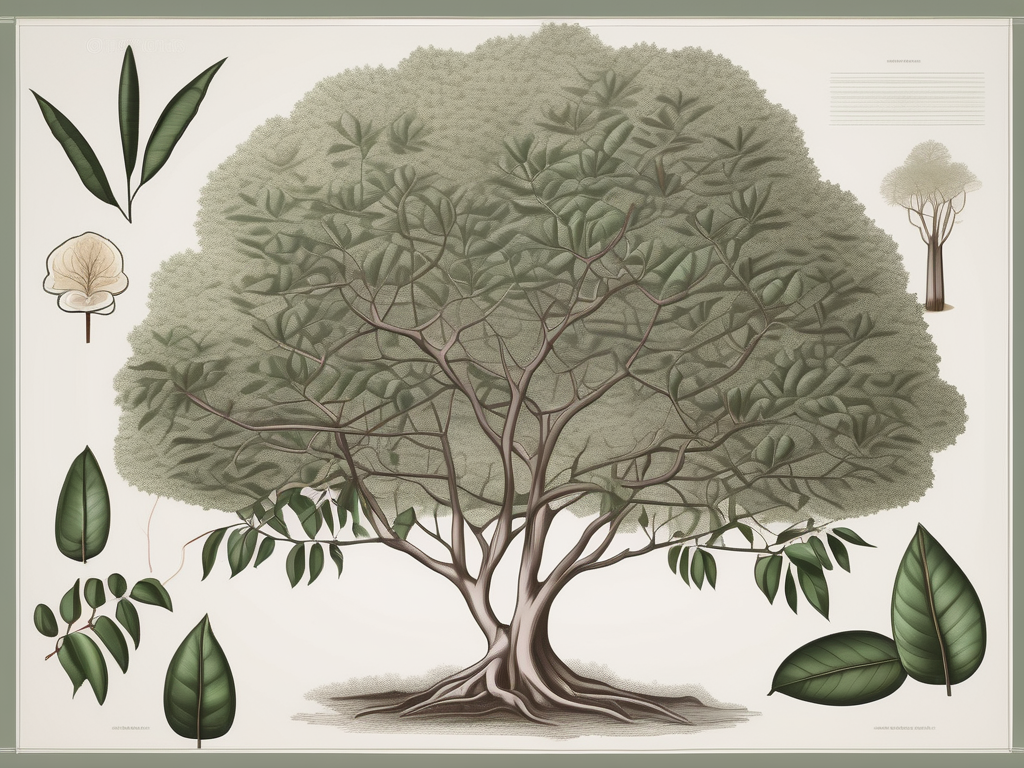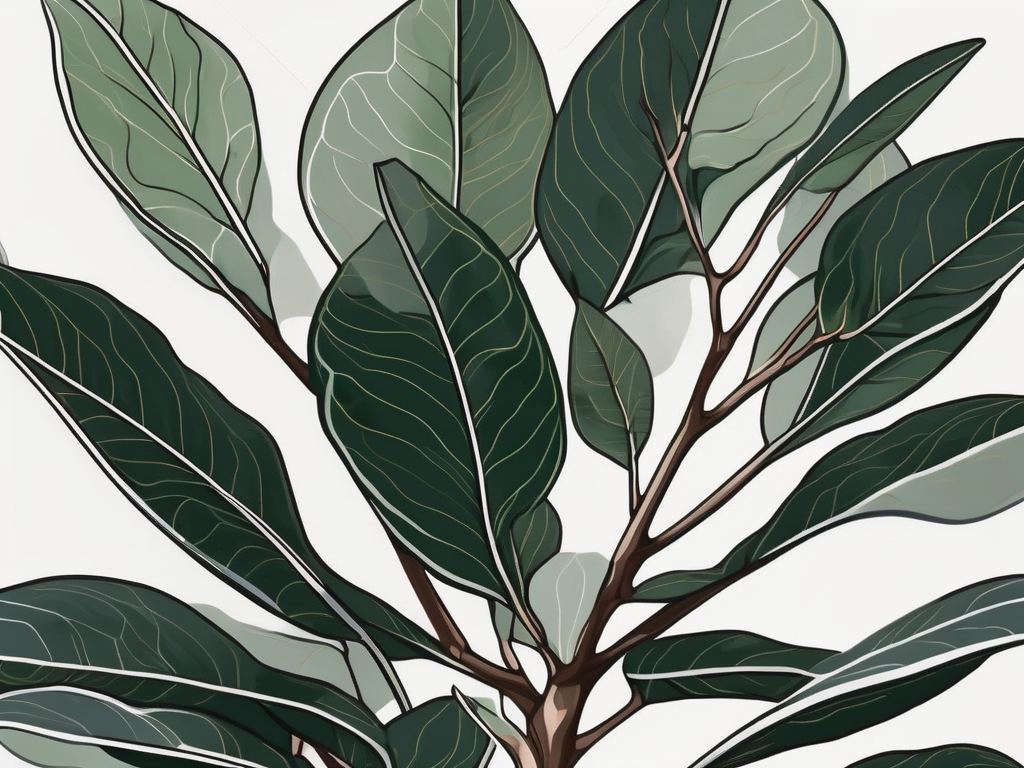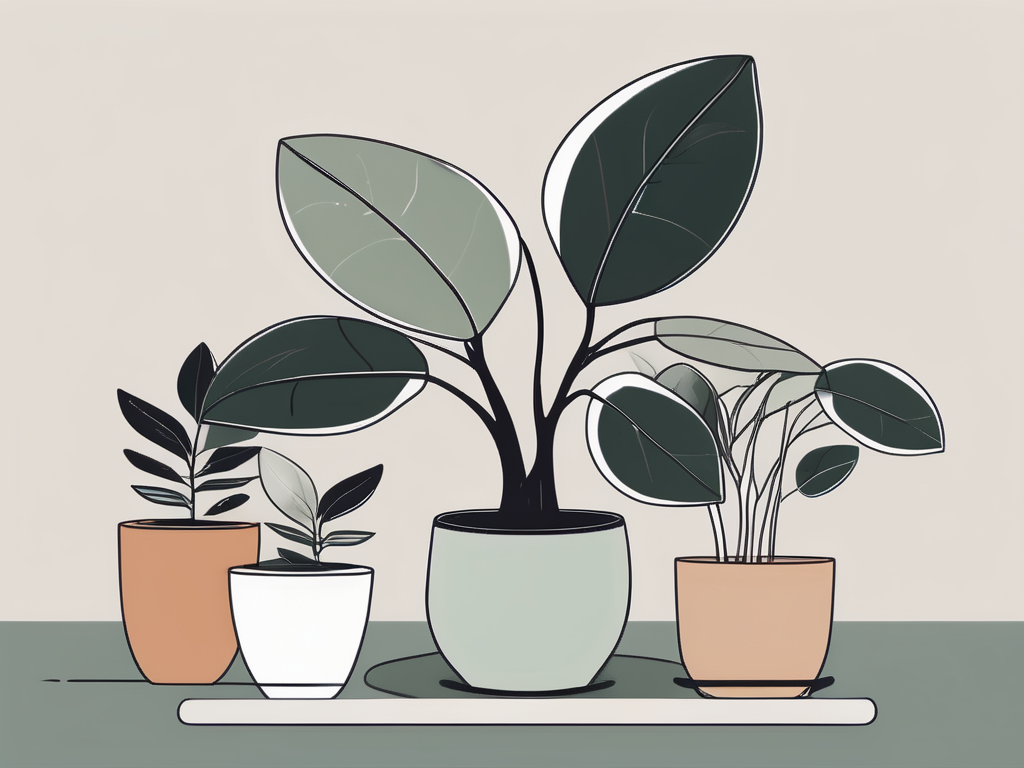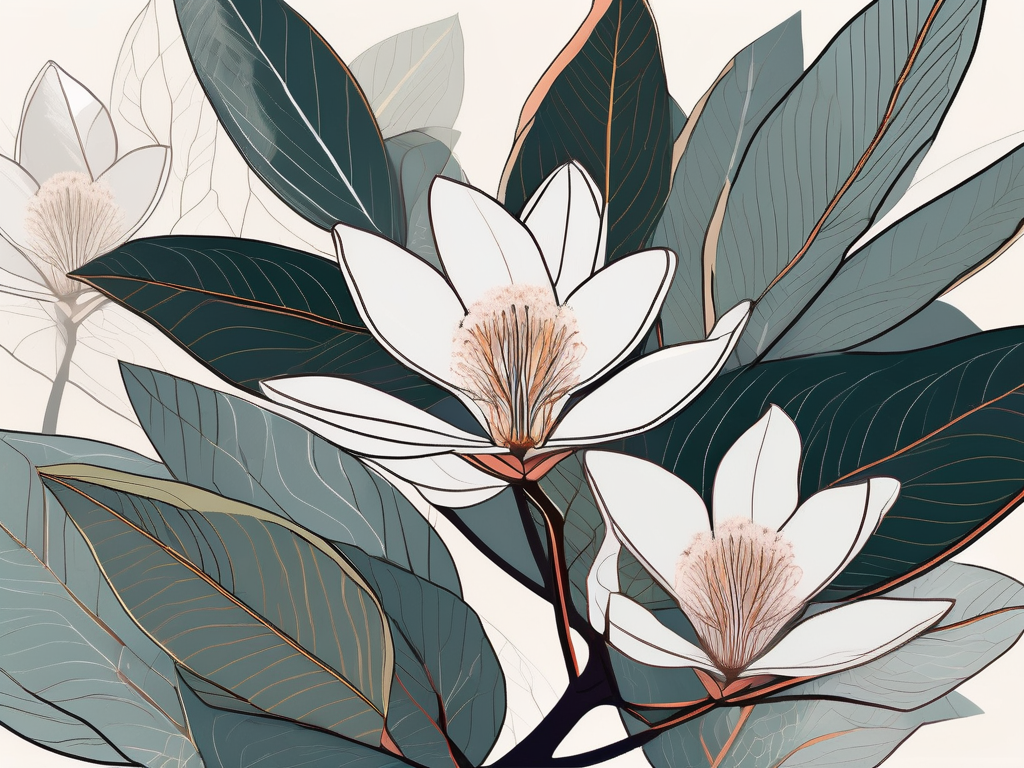
The rubber tree, or Ficus elastica, is often celebrated for its glossy leaves and low-maintenance nature, making it a popular choice among plant lovers. But did you know this plant also has a lesser-known secret? It can produce flowers! Although rare in indoor settings, the blooming process of the rubber tree flower is a fascinating journey worth exploring.
In this article, we'll take a closer look at the beauty of the rubber tree flower, guiding you through its blooming process. We'll discuss everything from the conditions that encourage flowering to tips on caring for your rubber tree. Whether you're a seasoned plant parent or new to the world of houseplants, you'll find valuable insights to help your rubber tree thrive.
The Hidden Beauty of the Rubber Tree Flower
Most people are familiar with the rubber tree's broad, shiny leaves, but its flowers are a bit of a mystery. Unlike the showy blooms of some plants, rubber tree flowers are more understated, often hidden beneath the foliage. They appear as small, capsule-like structures, resembling figs more than traditional flowers. This is because rubber trees belong to the fig family, and their flowers are actually enclosed within a fleshy structure known as a syconium.
These flowers aren't typically visible to the naked eye because they're housed inside the syconium. This makes the blooming process unique and intriguing. The flowers rely on a specialized type of wasp for pollination, which is one reason why flowering is rare indoors. Without these wasps, the chances of seeing a rubber tree flower are slim. However, understanding this process can enhance your appreciation for this resilient plant.
Interestingly, the rarity of rubber tree flowers in indoor settings adds to their allure. While you may not witness them often, knowing they're there, silently working away, adds an element of mystery and charm to this already captivating plant.
Creating the Right Environment for Flowering
Encouraging a rubber tree to bloom indoors can be challenging, but it's not impossible. The key is to mimic its natural environment as closely as possible. In the wild, rubber trees thrive in warm, humid climates with plenty of indirect sunlight. Recreating these conditions in your home can help stimulate the flowering process.
- Light: Rubber trees prefer bright, indirect light. A spot near a window with filtered sunlight is ideal. Too much direct sunlight can scorch the leaves, while too little light can hinder growth and flowering.
- Temperature: Aim to keep your rubber tree in a warm environment, ideally between 60-75°F (15-24°C). Sudden temperature changes can stress the plant, so try to maintain a consistent climate.
- Humidity: As a tropical plant, the rubber tree benefits from high humidity. Using a humidifier or placing a tray of water near the plant can help increase moisture levels.
- Watering: While rubber trees don't like to sit in soggy soil, they do appreciate consistent moisture. Allow the top inch of soil to dry out between waterings. Overwatering can lead to root rot, which is detrimental to flowering.
- Soil: Use a well-draining potting mix to prevent waterlogging. A mix of peat, pine bark, and perlite works well for rubber trees.
By providing these conditions, you're setting the stage for your rubber tree to potentially bloom. While there's no guarantee, creating an optimal environment increases your chances of enjoying this rare event.
Understanding Growth Cycles and Blooming
Like many plants, rubber trees have specific growth cycles that influence their blooming potential. These cycles are closely tied to seasonal changes, even when grown indoors. During the spring and summer months, rubber trees enter a period of active growth. This is when they're most likely to produce flowers, given the right conditions.
During the fall and winter, the plant's growth slows down, focusing on conserving energy rather than producing flowers. This doesn't mean you can't enjoy your rubber tree during these months. However, it's important to adjust your care routine to support the plant's natural rhythm.
One way to encourage blooming during the active growth period is through regular feeding. Rubber trees benefit from a balanced, water-soluble fertilizer every month during the growing season. This provides the necessary nutrients to support both leaf and flower growth.
Pruning can also play a role in the blooming process. While rubber trees don't require frequent pruning, removing dead or damaged leaves can help redirect energy toward new growth and potential flowering. Just be mindful not to over-prune, as this can stress the plant and hinder its ability to flower.
Recognizing the Signs of Flowering
So, how do you know if your rubber tree is getting ready to flower? There are a few subtle signs to watch for. While the actual flowers are hidden, changes in the plant's overall appearance can indicate the start of the blooming process.
- Increased Growth: During the flowering period, you may notice a surge in new leaves and branches. This is a good sign that the plant is healthy and ready to produce flowers.
- Swelling Syconia: Keep an eye on the small, fig-like structures on the plant. If they begin to swell or change shape, it could be a sign that flowering is underway.
- Color Changes: Some plant parents report subtle color changes in the leaves or stems as a precursor to flowering. This isn't always the case, but it's worth noting if you see any unusual shifts.
These signs can be exciting to observe, especially if you've been nurturing your rubber tree for some time. Remember, patience is key. Even with the right conditions, flowering may take time, and that's perfectly normal.
Common Challenges and How to Overcome Them
While the journey to seeing a rubber tree flower is rewarding, it's not without its challenges. Understanding these potential obstacles can help you address them effectively and keep your plant healthy.
- Pests: Common pests like spider mites and scale insects can affect rubber trees, particularly in dry environments. Regularly inspect your plant and wipe down the leaves with a damp cloth to prevent infestations. If pests do appear, treating them with insecticidal soap or neem oil can be effective.
- Overwatering: One of the most common issues with rubber trees is overwatering, leading to root rot. Ensure your pot has drainage holes and avoid letting the plant sit in water. If you notice yellowing leaves or a soggy soil, it might be time to adjust your watering routine.
- Leaf Drop: Sudden leaf drop can occur due to environmental stress, such as changes in light or temperature. If this happens, assess your plant's conditions and make adjustments as needed. Often, returning to a stable environment can help the plant recover.
By being proactive and attentive, you can navigate these challenges and keep your rubber tree on the path to potential blooming.
Integrating Rubber Trees in Your Home Decor
Beyond their potential to flower, rubber trees make a stunning addition to any home decor. Their large, glossy leaves add a touch of elegance and sophistication, fitting seamlessly into various interior styles. Whether you prefer a minimalist aesthetic or a more eclectic vibe, there's a place for the rubber tree in your home.
Consider the following ideas to incorporate this versatile plant into your living space:
- Statement Piece: Due to its size and striking appearance, a rubber tree can serve as a focal point in a room. Place it in a decorative pot that complements your decor, and let it shine as a natural centerpiece.
- Grouping: Pair your rubber tree with other plants of varying heights and textures to create an indoor jungle. This grouping can add depth and interest to any corner of your home.
- Accent in Neutral Spaces: The deep green of rubber tree leaves contrasts beautifully against neutral walls and furniture. Use this plant to add a pop of color to an otherwise muted space.
With a little creativity, you can transform your home into a haven of greenery, enhancing your living environment while enjoying the possible beauty of a rubber tree flower.
Care Tips for Long-Term Success
To keep your rubber tree thriving long-term, a few ongoing care practices can make all the difference. By providing consistent care, you'll not only encourage potential flowering but also ensure your plant remains healthy and vibrant.
- Regular Cleaning: Dust can accumulate on rubber tree leaves, hindering photosynthesis. Wipe down the leaves with a damp cloth every few weeks to keep them clean and shiny.
- Rotate the Plant: To promote even growth, rotate your rubber tree every few weeks. This helps ensure all sides receive equal light exposure.
- Repotting: Rubber trees can outgrow their pots over time. If you notice roots growing out of the drainage holes or the plant becoming top-heavy, it's time to repot. Choose a pot that's one size larger and refresh the soil to give your plant room to grow.
By incorporating these practices into your plant care routine, you'll foster a healthy environment where your rubber tree can flourish, potentially rewarding you with its elusive flowers.
Sharing Your Rubber Tree Journey
One of the joys of being a plant parent is sharing your experiences with others. Whether you're documenting your rubber tree's growth on social media or swapping tips with fellow plant lovers, there's a vibrant community ready to support and celebrate your plant journey.
Consider starting a plant journal to track your rubber tree's progress. Note any changes, challenges, and successes along the way. This can be a helpful reference and a fun way to look back on your plant's development.
Engage with online plant communities or local gardening groups to exchange knowledge and advice. Sharing your experiences can inspire others and create connections with like-minded individuals.
Remember, every plant journey is unique, and the beauty of the rubber tree flower may be just one of many rewards your plant offers. Enjoy the process, and don't hesitate to reach out to others for support and inspiration.
Final Thoughts
The rubber tree flower, with its hidden beauty and rare appearance, offers a unique glimpse into the plant's life cycle. While indoor flowering might be a challenge, the journey of nurturing your rubber tree is rewarding in itself. From creating the right environment to integrating the plant into your decor, every step contributes to a thriving, healthy plant.
Here at Cafe Planta, we're passionate about helping you care for your plants. Whether you're looking for new additions to your collection or need advice on plant care, we're here to support you. Feel free to reach out via email or connect with us on Instagram. Let's share the joy of plants together!
















